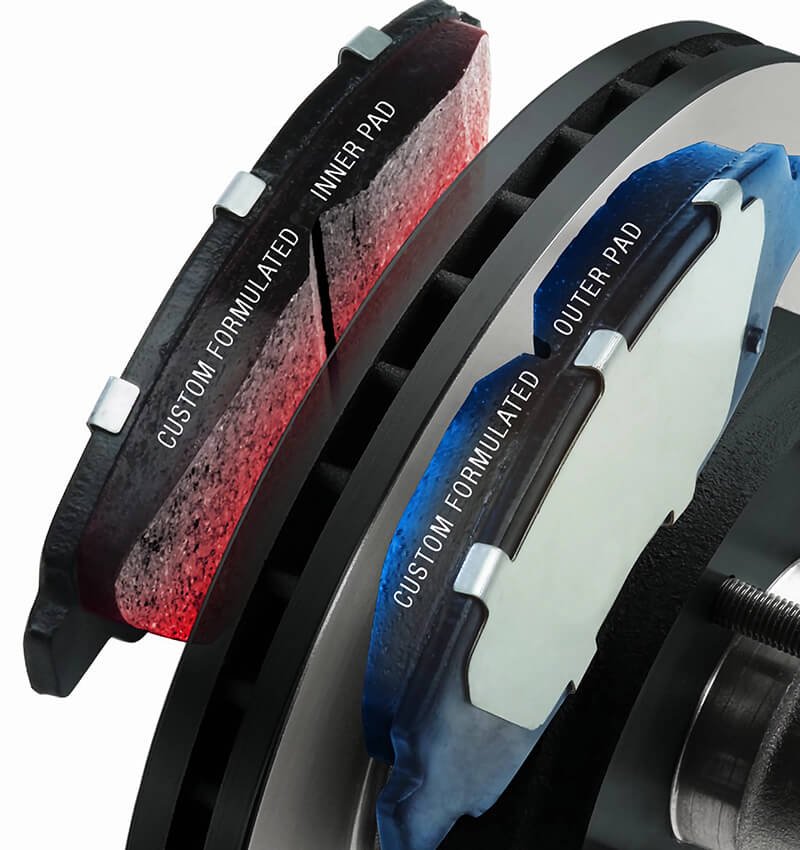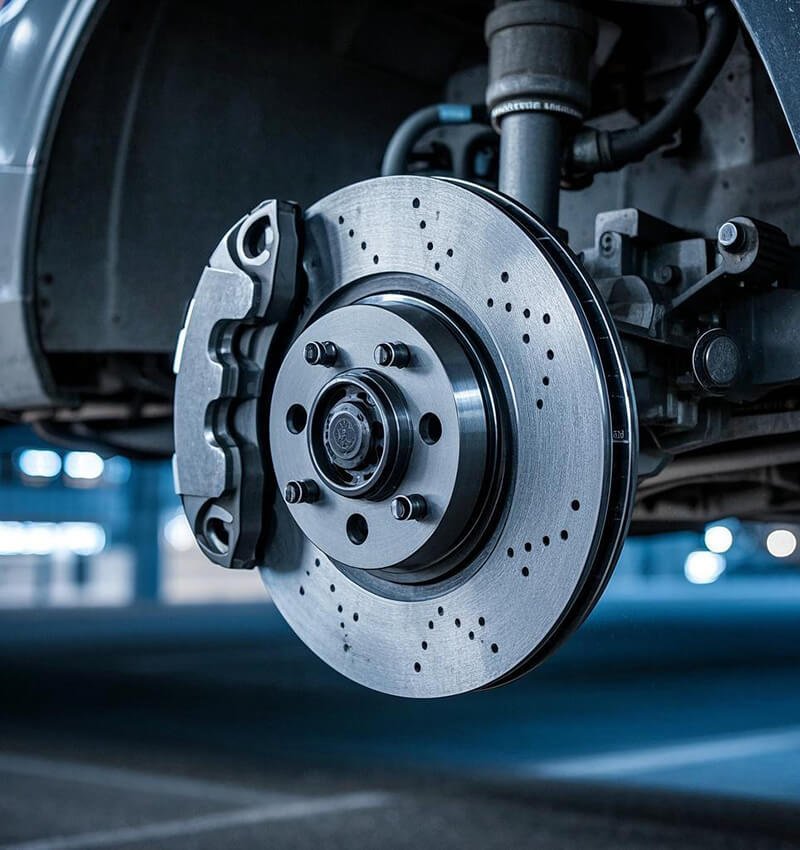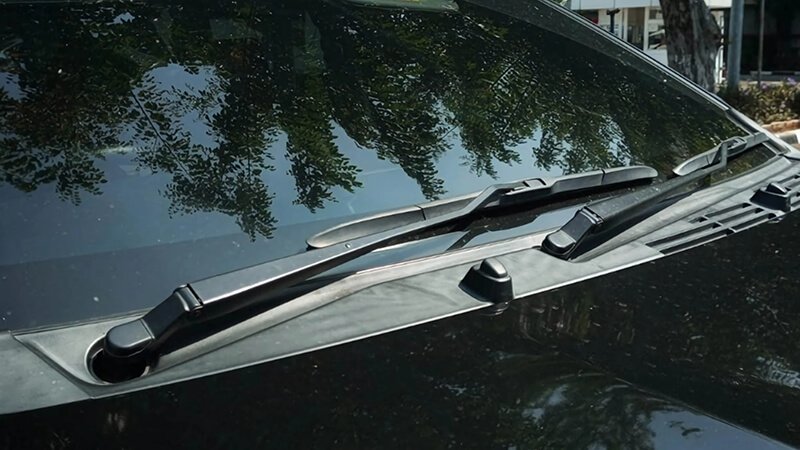A new car needing new brakes in just one year sounds alarming, right? It raises doubt about the vehicle’s quality or the parts used. But I’ve seen it happen, and the reasons are often not what most people expect.
A one-year-old car may need new brake pads because of poor-quality materials, uneven caliper pressure, or improper installation causing continuous friction and heat that accelerate wear. Using premium, certified pads like Runex Auto’s ensures consistent performance and long-term reliability.
Sometimes, it’s not the driver’s fault at all. Manufacturing tolerances, low-grade materials, or harsh driving environments can all shorten brake life. But knowing what’s happening inside your braking system can save you from unnecessary panic—and costly repairs.

Can brake pads go bad in one year?
It’s easy to assume that brake pads on a new car should last for several years. But the truth is, not all pads are created equal. I’ve seen brake pads deteriorate in under a year, especially when made from poor friction materials that harden, crack, or glaze under heat.
Yes, brake pads can go bad in one year if they are made with low-quality compounds or installed incorrectly. Moisture, corrosion, or constant contact with rotors can also cause rapid deterioration, even when the car has low mileage.
Dive deeper into what causes this early failure
When I first entered the automotive parts business, I thought “new” automatically meant “durable.” I was wrong. A client once sent me a photo of a glazed pad that came from a car barely 10 months old. The issue wasn’t driving style—it was material. The pad compound was too soft, causing it to overheat and lose friction.
Runex Auto brake pads1 are engineered with a stable friction coefficient. We use semi-metallic and ceramic formulas2 designed to handle high temperatures without fading. That means when drivers brake suddenly or drive in stop-and-go traffic, our pads resist glazing and cracking.
| Common Cause | Result | How Runex Pads Solve It |
|---|---|---|
| Low-grade material | Glazing, noise, poor stopping | Premium compound with consistent friction |
| Stuck caliper | Uneven wear | Stable pad backing and even pressure distribution |
| Moisture & rust | Corrosion on pad surface | Anti-rust coating and sealed packaging |
| Heat buildup | Cracking, fading | High-temp resistant friction mix |
When pads “go bad” early, it’s rarely visible from the outside. That’s why using certified materials and tested formulas is critical. At Runex, we test every batch for compressibility, shear strength, and fade resistance. This ensures consistent braking under all conditions. It’s not just about stopping power—it’s about reliability and safety.

Why have my brake pads worn so quickly?
A customer once called me in a panic because his client’s one-year-old sedan was squealing badly. The pads had worn almost to the metal. After inspection, we found a stuck caliper dragging constantly. Even the best pads will fail fast under those conditions.
Fast brake pad wear usually means the pads are under constant friction—caused by caliper drag, misalignment, or cheap pad material. Quality pads like Runex Auto’s resist heat, minimize dust, and maintain performance even under high stress.
Dive deeper: when speed of wear tells a story
When pads wear fast, it’s telling you something about the system. Continuous contact between pad and rotor generates heat, friction, and premature breakdown. Add poor material composition, and you have pads that lose performance quickly.
I’ve seen this many times in fleet vehicles and taxis. They brake hundreds of times a day. If the friction material isn’t uniform, or if the backing plate flexes, wear happens unevenly. That’s why we design Runex pads3 with thermal stability4 and uniform density. It keeps braking predictable and balanced.
| Symptom | Likely Cause | Runex Solution |
|---|---|---|
| One pad worn more than the other | Caliper piston stuck | Consistent backplate design prevents uneven pressure |
| Pads wear unevenly | Rotor surface irregular | Runex pads adapt to rotor microtexture |
| High dust output | Organic materials | Low-dust ceramic blend |
| Noise during braking | Pad glazing | Stable friction coefficient keeps surface clean |
Runex Auto pads are designed for longer life and minimal noise. When paired with proper rotor condition and caliper function, they last two to three times longer than standard aftermarket pads. In our tests, they maintain optimal friction even after 50,000 stops.

How can I tell if brake pads are bad?
Drivers often ask me, “How can I tell if my brake pads are bad?” The truth is, they give you plenty of warning—if you listen carefully. Squealing, grinding, or a longer braking distance are signs that the pads are past their best.
Bad brake pads make squealing or grinding noises, feel spongy, or cause longer stopping distances. Regular inspection and using certified pads like Runex Auto’s help avoid sudden failures and keep braking smooth and quiet.
Dive deeper: what your car is trying to tell you
One of my clients once ignored a faint squeal for months. By the time he called, the pad had worn down to the metal backing plate, scarring the rotor. The fix cost triple what it should have. That’s why I always tell customers: small sounds mean big signals.
Here’s how to check your pads before it’s too late:
| Sign | What It Means | What To Do |
|---|---|---|
| Squeal when braking5 | Pad wear indicators contacting rotor | Inspect immediately |
| Grinding noise6 | Metal-to-metal contact | Replace pads and inspect rotors |
| Vibration in pedal | Uneven pad wear or rotor warp | Check caliper alignment |
| Pulling to one side | Uneven pressure | Inspect pistons and hoses |
| Dust on wheels | Excessive pad wear | Clean and monitor |
Runex Auto brake pads are designed to minimize these symptoms. Our pads use noise-reducing shims and high-temperature adhesives that prevent squeal. Plus, our consistent friction mix ensures even wear, reducing pedal vibration and fade. Good pads aren’t just quieter—they make your car safer.

What are signs of bad brake rotors?
Rotors and pads work together. When one fails, the other soon follows. Even the best pads can’t compensate for a warped, uneven, or corroded rotor surface.
Bad brake rotors cause pulsation, vibration, or scraping noises. Visible grooves or rust on the surface mean the rotor no longer provides uniform friction. Replacing or resurfacing the rotor along with installing Runex pads ensures optimal braking balance.
Dive deeper: when metal tells the truth
A worn rotor feels like a heartbeat under your foot. That pulse is uneven contact between pad and rotor. If the metal is warped or ridged, it prevents full pad engagement. Heat then builds up in patches, leading to faster pad wear and even rotor cracking.
I once inspected a client’s delivery van that shook violently when braking. The rotors were scored and discolored from heat. We replaced them and fitted Runex Auto pads7. The vibration disappeared instantly, and the braking felt solid again.
| Rotor Issue | Symptom | Result | Solution |
|---|---|---|---|
| Warped rotor | Pulsation in brake pedal | Uneven braking | Resurface or replace rotor |
| Rust buildup | Grinding noise | Reduced friction | Clean or replace rotor |
| Deep grooves | Squeal, uneven wear | Pad damage | Replace rotor and pad set |
| Overheating spots | Discoloration | Brake fade | Use high-heat pads like Runex |
Runex Auto pads are engineered to work best with smooth, flat rotor surfaces8. Our pads maintain consistent friction even when the rotor temperature exceeds 500°C. This combination minimizes vibration and extends the lifespan of both parts.

Conclusion
A one-year-old car needing new brakes9 isn’t always a red flag. Sometimes it’s a sign of poor material quality, uneven pressure, or environmental conditions. The solution isn’t just to replace the pads—it’s to choose the right ones. Runex Auto brake pads are tested for consistent friction, noise reduction, and durability. They perform reliably, even under high stress, giving both drivers and suppliers peace of mind.
-
Explore the advantages of Runex Auto brake pads to understand their superior performance and reliability in various driving conditions. ↩
-
Learn about semi-metallic and ceramic formulas to discover how they enhance brake pad durability and performance. ↩
-
Explore how Runex pads enhance braking performance and longevity, ensuring safety and efficiency. ↩
-
Learn about the critical role of thermal stability in brake pads for consistent performance and safety. ↩
-
Understanding the meaning behind a squeal can help you address brake issues early, ensuring safety and saving on costly repairs. ↩
-
Exploring the implications of a grinding noise can prevent further damage to your vehicle and enhance your driving safety. ↩
-
Explore the advantages of Runex Auto pads for improved braking performance and longevity. ↩
-
Discover how flat rotor surfaces enhance braking efficiency and longevity, ensuring smoother rides and reducing maintenance costs. ↩
-
Find the best auto brake pads from Runex Auto. ↩













